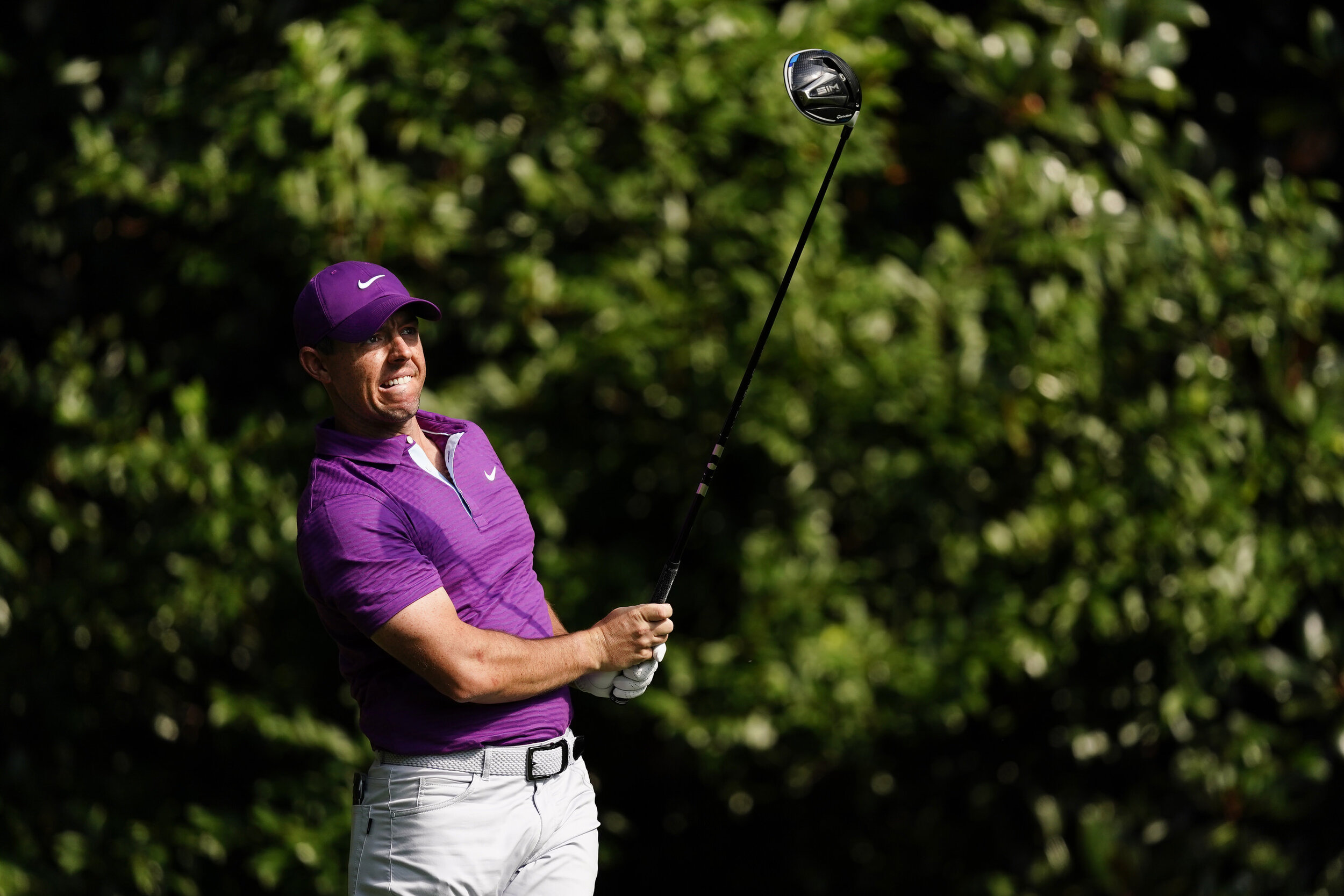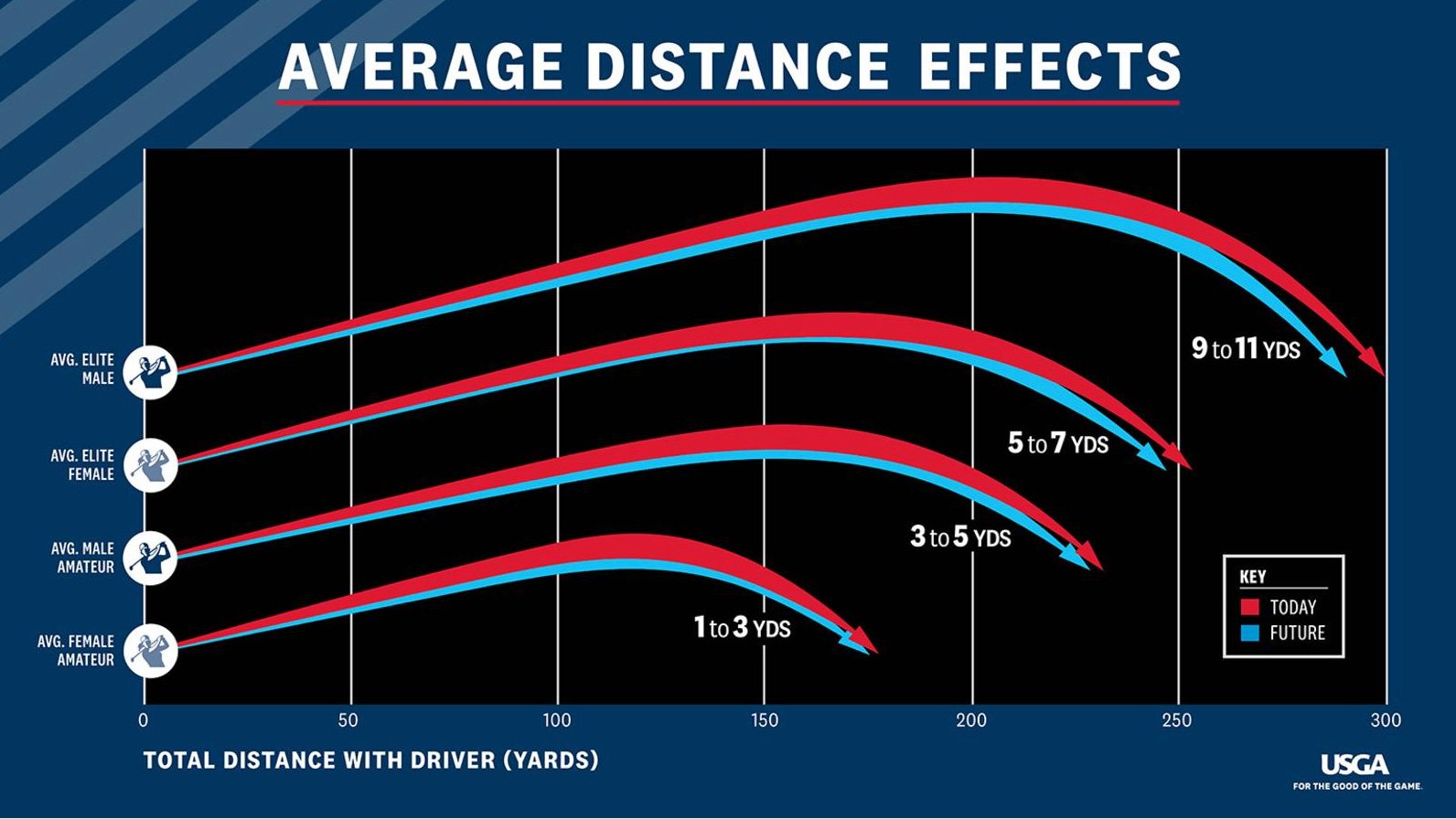McIlroy favours bifurcation but says Distance Insights Report "huge waste of time and money" and "reeks of self-importance"

Rory McIlroy last night launched a withering attack on golf’s governing bodies when he branded the new Distance Insights Report “a huge waste of time and a huge waste of money.”
Speaking ahead of the Waste Management Phoenix Open, where he is joined by Pádraig Harrington hoping to end his 15-month drought in front of galleries limited to less than 5,000, he also revealed that the PGA Tour only discovered on Monday that a volunteer had actually stepped on his ball in the third round of last week’s Farmers Insurance Open.
The four-time Major winner admitted he was relieved to discover that he was not mistaken in claiming embedded ball relief having passed an uneasy night on Sunday wondering if he’d done the right thing after a TV replay released by the PGA Tour on Sunday morning showed that his ball had bounced, not plugged.
While it was not altogether surprising to hear one of TaylorMade’s highest paid players take the R&A and the USGA to task for this week’s announcement flagging the banning of the 48-inch driver and a review of club and ball specifications to help mitigate continuing distance increases, it was the vehemence of his comments, which miss the point of what the governing bodies are trying to achieve in terms of making the game sustainable, that was eye-opening.
“I think the R&A and USGA are looking at the game of golf through such a tiny little lens,” McIlroy said at TPC Scottsdale, where he still said he was in favour of bifurcation of equipment for the elite amateurs and tour players.
“What they are trying to do is change something that pertains to 0.1% of the golfing community. 99.9% of the people that play this game, play it for enjoyment. They play it for entertainment. They don’t need to be told what ball or clubs to use. We have to make the game as easy and as approachable as possible for the majority of golfer.
“Honestly, I think this Distance Insights Report has been a huge waste of time and a huge waste of money because that money could have been way better distributed to getting people into the game, introducing people to the game. Introducing minorities to the game.
“I heard Mike Davis say something like ‘we’re trying to protect the game for the next hundred years’. This isn’t how you do it. This is so small and so inconsequential compared to the other things that are happening in the game. It’s the grassroots, it’s getting more people engaged in golf, that’s where they should be spending their money. Not spending it on the Distance Insights Report.”
He was even more forceful on Golf Channel, telling reporter Todd Lewis that the actions of the R&A and USGA “reeks of self-importance.”
Rory got a bit triggered here, thoughts? pic.twitter.com/TMJEImhgGZ
— Peter Finch (@PeterFinchGolf) February 3, 2021
The former world No 1 said he be “all in favour” of tour players playing by local rules.
“If they want to try and make the game more difficult for us or try to incorporate more ‘skill’ to the game, I’d be all for that because it only benefits the better player, which I feel like I am,” he added.
“I think maybe they said that in terms of local rules and maybe some sort of bifurcation, but we we are such a tiny portion of golf. Like golf is way bigger than the professional game. We're such a tiny part of it. It's the other stuff that really matters, and that's the stuff they need to concentrate on.“
His comments on the Distance Insights Report differ slightly from what he said on February 12 last year when he made not mention of its cost and lauded efforts to reduce goif’s carbon footprint:
“You know, I think the biggest thing that came out of the report for me, a lot of the stuff about the ball going too far and technology, it really pertains to 0.1 percent of golfers out there. So look, if they want to try to contain what we do as touring professionals, I'm all for that.
Selfishly, I think that that's only a good thing for the better players, but for the game in general, I think one of the best things that came out of it was the sustainability aspect and the fact that architects building these golf courses, and not even architects to a degree, but also the people that are giving the architects the money to build these golf courses with this grand ambition of maybe having a Tour event one day. Building these golf courses on these massive pieces of land, having to use so much water, so much fertilizer, pesticides, all the stuff that we really shouldn't be doing nowadays especially in the climate we live in and everything that's happening in our world. You look at what happened in Australia, you look at what happens in this state every August, September, October time with fires and global warming.
I think golf has a responsibility to minimize its footprint as much as it possibly can. For me, I think the sustainability aspect of what they're trying to do is very important and that's the one thing I would definitely stand behind.”
As for the embedded ball incident on the 18th at Torrey Pines on Saturday, his revelations raise questions about why the PGA Tour rushed to issue a statement comparing his situation to Patrick Reed’s.
Reed in turn, may need to apologise for tweeting to pint the finger at McIlroy, saying that not only had McIlroy taken a similar drop, he hadn’t even called a referee.
“Not sure it was Patrick,” McIlroy said of Reed’s tweet. “Could have been someone from the Reed family, but I don't think it was Patrick.”
As for the sudden appearance of a confession by a volunteer on Monday that he’s stepped on his ball, McIlroy gave a full explanation.
“So what's came to light is -- so on 18, as we were searching for my ball -- well, it wasn't apparent at the time, but an email was sent to the TOUR on Monday saying my ball was stepped on to be found, but the volunteer didn't tell me that on Saturday.
“So that's why I took embedded ball relief, because it was an embedded ball, but I didn't know it had been stepped on at the time. So obviously the video came out on Sunday with my ball bouncing and then going in, and at that point I'm like, well, it must have went into its own pitch mark or something, because the ball was obviously plugged.
“Then it came to light on Monday that a volunteer had stepped on it and hadn't told me, and that's why the ball was embedded. I went to bed Sunday night sort of questioning whether I had done the right thing after seeing the video.
“And then it's so weird, the TOUR got an email on Monday from a volunteer saying that he didn't tell me at the time and he should have, but he stepped on the ball to find it, and that is why -- and I guess at the end of the day I almost took the wrong relief because I should have taken relief for a stepped on ball, which means you can place it instead of drop it. At the time I didn't have that information.
“I at least felt better about my actions knowing I did the right thing, that I did take relief for a ball that was embedded or stepped on. So it sort was nice that that came to light, because I was questioning myself on Sunday a little bit. It's funny how these things all work out at the end.”
Admitting he even began to doubt himself despite being adamant he had a plugged ball on Saturday, he said: “Yeah, pretty much. I sort of, did I do the right thing? Did I play by the rules? Did I see something that wasn't there? It was a bit of a rough Sunday night. I just started to doubt myself a little bit, which is not like me. But I was convinced that it was an embedded ball. Then it's funny, the TOUR got an email on Monday that it had been stepped on and the volunteer said something like, I'm so sorry that Rory is being dragged into this scenario, but I didn't tell him that I actually stood on his ball to find it. Yeah, there you go.”






